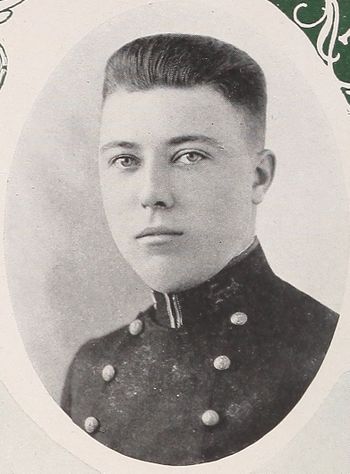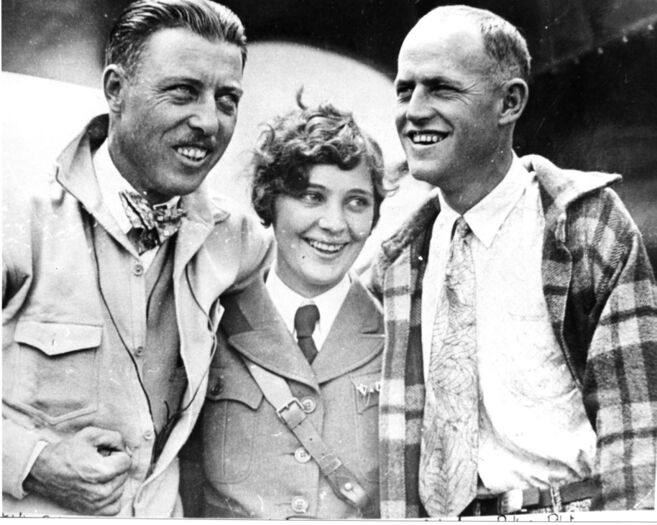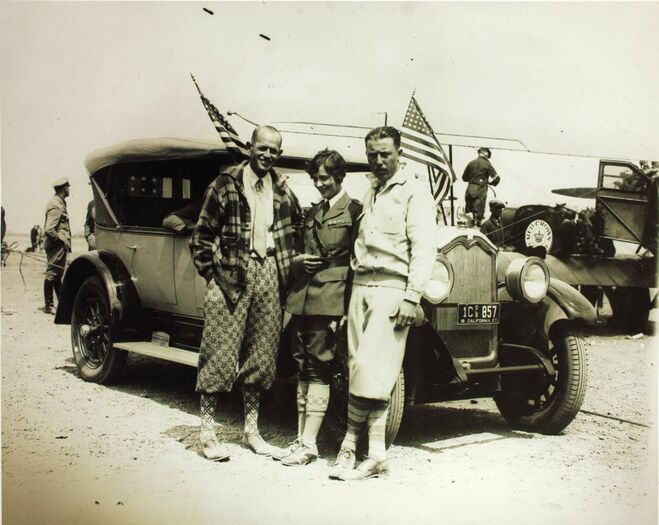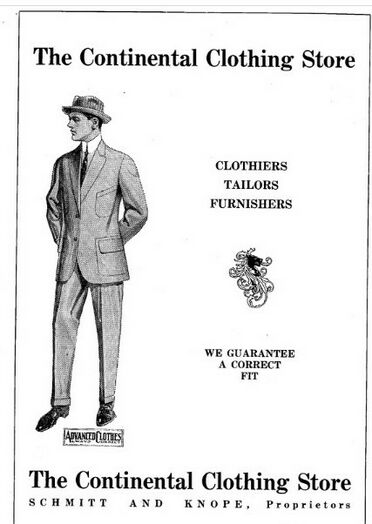VILAS R. KNOPE, LT, USN
Vilas Knope '20
Lucky Bag
From the 1920 Lucky Bag:
Vilas Raymond Knope
Stevens Point, Wisconsin
"Cy" "Canope"
IF there is anything in proverbs, Vilas must be unlucky in love, but judging from the daily missiles from Steven's Point, he is an exception to all rules.
"Canope" never starred, nor even came close to it, but it was only because of his constitutional antipathy to boning, several long stays in the hospital, and a great liking for the Cosmo.
"Cy" has never done much for athletics, but he is always in for a good time, and when he goes ashore, all hands usually have a real treat.
Knope is open and above board in his dealings with his classmates in particular and mankind in general. He is bound to succeed wherever duty calls.
One morning Frank Friday casually inquired, "Where are you from, Mister?"
"Steven's Point, sir."
"What's that famous for?"
"Breweries, sir."
Honors: Buzzard.
The Class of 1920 was graduated in June 1919 due to World War I. The entirety of 2nd class (junior) year was removed from the curriculum.

Vilas Raymond Knope
Stevens Point, Wisconsin
"Cy" "Canope"
IF there is anything in proverbs, Vilas must be unlucky in love, but judging from the daily missiles from Steven's Point, he is an exception to all rules.
"Canope" never starred, nor even came close to it, but it was only because of his constitutional antipathy to boning, several long stays in the hospital, and a great liking for the Cosmo.
"Cy" has never done much for athletics, but he is always in for a good time, and when he goes ashore, all hands usually have a real treat.
Knope is open and above board in his dealings with his classmates in particular and mankind in general. He is bound to succeed wherever duty calls.
One morning Frank Friday casually inquired, "Where are you from, Mister?"
"Steven's Point, sir."
"What's that famous for?"
"Breweries, sir."
Honors: Buzzard.
The Class of 1920 was graduated in June 1919 due to World War I. The entirety of 2nd class (junior) year was removed from the curriculum.
Loss
Sy was lost on August 16, 1927 when the aircraft he was aboard, Miss Dolan, went missing during the Dole Air Race from Oakland, California to Honolulu. He was the navigator.
Other Information
From This Day In Aviation:
Buhl CA-5 Air Sedan, NX2915, named Miss Doran. Repairs from its unscheduled landing in the farmer’s field had been accomplished. It was flown by John “Auggy” Pedlar with Lieutenant Vilas R. Knope, U.S. Navy, as navigator. Also aboard was a passenger, Miss Mildred Doran, the airplane’s namesake. She was a 23-year-old fifth-grade school teacher from Flint, Michigan, who knew William Malloska, owner of the Lincoln Petroleum Company (later, CITGO) and convinced him to enter an airplane in the Dole Air Race and allow her to fly along. Two local air circus pilots reportedly flipped a coin for the chance to fly the airplane. Auggy Pedlar won the toss. Just ten minutes after takeoff from Oakland Field, Miss Doran returned with engine problems.
The aircraft took off again a short while later, was seen over the Farallon Islands, and then disappeared.
From researcher Kathy Franz:
Vilas Knope – clothing ad
In early 1914, Sy was on the arrangement committee of The Grand Opera House ushers who provided dancing parties at the Empire Amusement hall. Admission to the February 6th dance was 75 cents with music provided by Weber’s orchestra.
In March, 1915, Sy bowled 172-179-146 for the Continental Clothing store employees who were up against the post office employees. Other Knopes on his team were his brother Fred who bowled 136-173-153 and his cousin Ed who bowled 139-124-150. In a different match against the Macnishes, C. Knope bowled 128-142-116 for the Continental employees.
Sy graduated in June 1915, and he with another classmate presented the Class Mementoes in the program. He had been enrolled in the Scientific course study, had been secretary of the Athletic Association and played football. Sy then attended the Normal school (now the University of Wisconsin at Stevens Point) and played football there as a back field man.
In March, 1916, Sy representing the Continental was a model in the first Stevens Point Fashion Show held at the Episcopal parish hall.
In April, he took the Annapolis examinations. In May, he was notified that he failed the geometry examination for entrance into the Military Academy at West Point. This had not been taught in the schools Sy previously attended. Congressman E. E. Browne asked that he study and re-take the examination later.
In July, Sy was able to visit the German submarine Deutschland moored in Baltimore. Robert Werntz, former naval officer and head of Sy’s preparatory school, secured an official permit for the two to inspect the submarine. Sy made sketches and a detailed description of it.
In August, Sy passed his physical examination and entered the Naval Academy.
In January, 1917, Sy was quarantined for measles and was unable to march with other midshipmen in Admiral Dewey’s funeral procession.
For having the largest number of relatives in the service in January, 1918, Sy’s sister Helen had the honor of presenting the school service flag at St. Stephen’s school. Made by the Sisters de Notre Dame, the flag was 35” x 47” and contained 43 stars which represented former pupils now in the service. At the time, Sy was in the Naval Academy, Fred was in Battery E, 120th Field Artillery, stationed at Camp MacArthur, Waco, Texas; and Edward served in France for five months with the Sixty-second field artillery brigade.
In May, 1918, Sy had an appendectomy and was sent home to recuperate. He missed the summer cruise on the South Dakota. On September 15, Sy spoke to the Progress Club of Stevens Point. His topic was life at the Annapolis naval academy. He also spoke to the students of the high school on the 12th.
Sy married Gwendolyn Lillian Davies on November, 30, 1920, in Jersey City. During WW I, she was a member of the motor corps section of the Red Cross. Their daughter Gwendoline was born in Boston on October 5, 1921.
In a letter to his parents in December, 1922, Sy told of the troubles between Moslems and Christians in Constantinople.
From the Stevens Point Journal, January 3, 1923
“The situation over here you understand and probably know more about than I do, but there are a lot of things printed in the newspapers at home that are a trifle exaggerated. These massacres for instance are overdone, but a whole lot about them is true and I have seen more suffering and misery in one day than I thought there was in the whole world. We evacuated 6,500 refugees from Adalia to the Island of Rhodes and of that number seven died the first day at sea. We put them on three small Greek steamers and when we got to Rhodes, we had to unload one of them onto one of the others and send that to another place. You can’t imagine what the conditions were on the boat we unloaded. There were four dead on that boat, but two more had come to take their places. One of the babies was born down in the engine room behind a pump with absolutely no attention at all and one hour later the mother was up on the deck giving the youngster a bath in a bucket. Try and believe that one.
“After leaving Jaffa we went to Beirut, the seaport of Damascus. We stayed there three days, long enough for some of us to go over to see the city. From there we went to Adalia and spent a week on refugee work. We stayed around Rhodes for a while and from there went to Smyrna. You can’t imagine the havoc the fire had wrought, practically the whole of the city being destroyed. While we were there there was a rumor of trouble and all the English people of the city left everything they had and went out to the destroyers in the harbor and stayed there.
“We have been in Constantinople this last time for about two weeks and we are due to leave for the Black Sea tomorrow. We remain at Varna, Bulgaria, for ten days and go from there to Samsoun for another ten days. From there we go to Trebizond for another ten days.”
Lieutenant Knope enclosed two snapshots taken at Adalia. One of them shows American bluejackets guarding a pile of bread on the beach, part of a consignment of 2,300 loaves sent there for refugees.
From the Stevens Point Journal, June 18, 1923:
Americans Keep Out Lieutenant’s Advice
This Country Also May Depend on Near East Staying Hungry so Long as America Feeds It
Advising that the United States keep out of League of Nations, and avoid the entanglements sure to follow entry into old world disputes, Lieutenant Vilas Knope, U. S. N., spoke to the Rotary club at noon today. Lieutenant Knope has been recently with the American destroyer squadron protecting American interests in the near east. So keen is the struggle of the European powers over the oil rights in Turkey that trouble is bound to follow any decision, he believes, and the United States will do best by standing aside. “Those people are set in their ways,” he said. “Americans stand highest of all in the near east now, and we need not enter into the local disputes which are mainly commercial.”
At various Turkish and Balkan ports, Lieutenant Knope saw thousands of refugees living on American contributions. “They can get work if they want it,” he said, “But they won’t work so long as America is willing to feed them without work.”
As an example of the ways of Turkish fire department, he mentioned a fire at a port where the fleet was stationed. It seems that there are no public fire departments, but large towns have several fire companies in competition with each other. A fire breaking out at that point, five companies appeared, and the owner of the property took bids to get the cheapest price. Then the successful company was obliged to borrow hose from one of the others, the pay therefore being a matter of lengthy debate, and finally the owner of the adjoining property refused to allow the firemen to cross his land until he had been paid a fee. Finally all the details were arranged, and the hose was laid, but the house in the meantime had burned down.
Lieutenant Knope believes the Turks, despite their bad name, to be fairly good citizens, and stated that most of the atrocities charged to them were really the work of the Greeks.
The Stevens Point City Council designated August 16, 1928, as Lieut. Vilas R. Knope Memorial Day. All flags in homes and businesses were to be displayed at half-mast.
Sy’s father was Nicholas who was part-owner of the Continental Clothing store. His mother was Martha, sisters were Helen and Florence, and brothers were John Frederick, Joseph Edward, and Francis.
Sy has a memory marker in Wisconsin.
Photographs
Related Articles
George Covell '22 and Richard Waggener '22 were entered in this race as well, but died on their way to Oakland.
The "Register of Commissioned and Warrant Officers of the United States Navy and Marine Corps" was published annually from 1815 through at least the 1970s; it provided rank, command or station, and occasionally billet until the beginning of World War II when command/station was no longer included. Scanned copies were reviewed and data entered from the mid-1840s through 1922, when more-frequent Navy Directories were available.
The Navy Directory was a publication that provided information on the command, billet, and rank of every active and retired naval officer. Single editions have been found online from January 1915 and March 1918, and then from three to six editions per year from 1923 through 1940; the final edition is from April 1941.
The entries in both series of documents are sometimes cryptic and confusing. They are often inconsistent, even within an edition, with the name of commands; this is especially true for aviation squadrons in the 1920s and early 1930s.
Alumni listed at the same command may or may not have had significant interactions; they could have shared a stateroom or workspace, stood many hours of watch together, or, especially at the larger commands, they might not have known each other at all. The information provides the opportunity to draw connections that are otherwise invisible, though, and gives a fuller view of the professional experiences of these alumni in Memorial Hall.
January 1920
January 1922
May 1923
July 1923
September 1923
November 1923
January 1924
March 1924
May 1924
July 1924
January 1925
March 1925
May 1925
July 1925
October 1925
January 1926
October 1926
January 1927
April 1927

The "category" links below lead to lists of related Honorees; use them to explore further the service and sacrifice of alumni in Memorial Hall.


